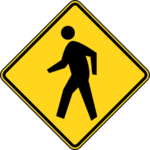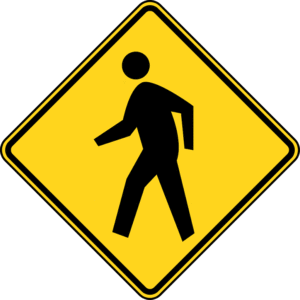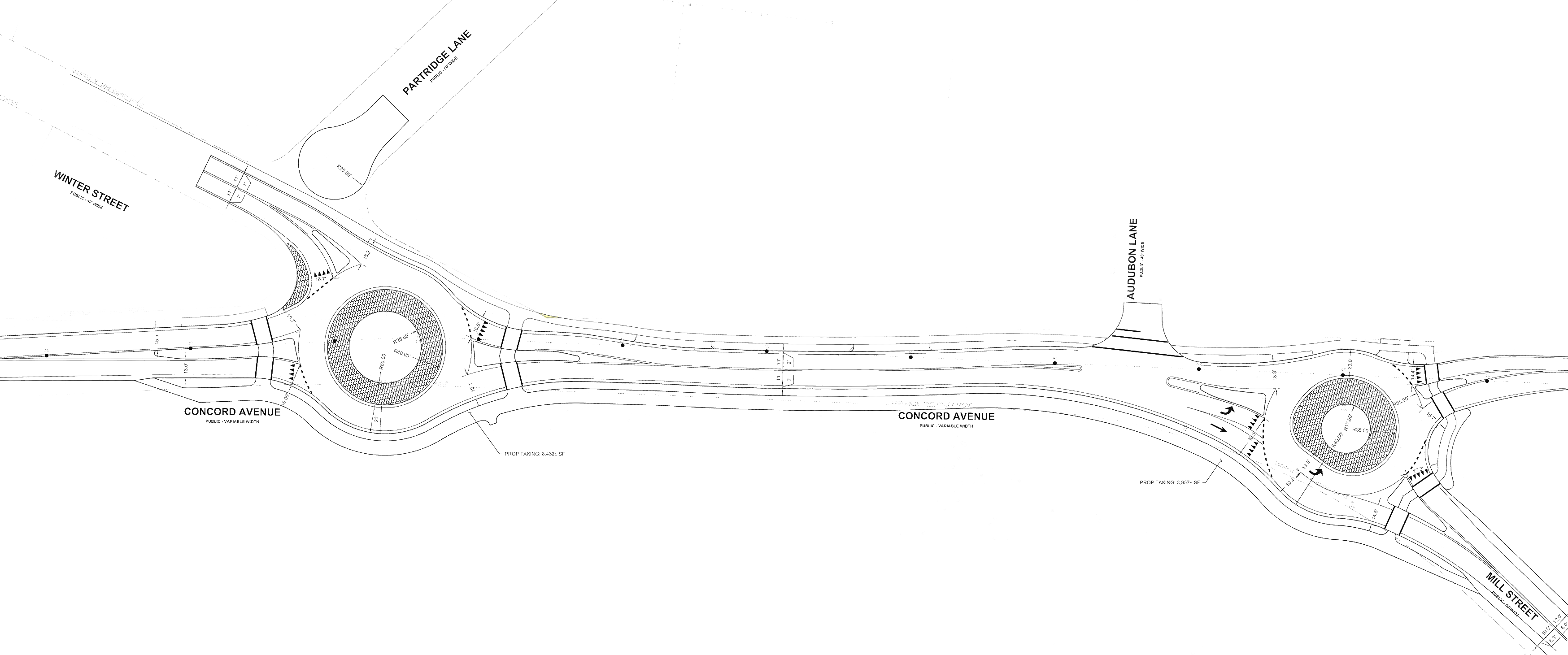
By Sue Bass
If you’ve noticed more speed bumps on Belmont’s streets, it’s not your imagination. They are a small clue to a new direction the town hopes to take: to slow traffic and make our roads safer for pedestrians and bicyclists.
Two major projects are on the horizon, if construction money can be found: signalization and pedestrian amenities at Huron Avenue and Grove Street, and two roundabouts at Concord Avenue and Mill and Winter Streets. The Winter Street roundabout will need some political magic in addition to money.
Meanwhile, two quicker projects are about to get underway. A $432,000 state Complete Streets grant will enable the town to add or improve five crosswalks on Concord Avenue near the new high and middle school, and there’s a small but potentially meaningful effort to calm traffic on Juniper Road near Mass Audubon’s Habitat Sanctuary. The Juniper Road changes, which can likely be funded from the town’s road budget, were approved unanimously by the Traffic Advisory Committee (TAC) on July 16. They might be a model for traffic calming on Somerset Street and Wellington Lane.
Juniper Road is an S-curve with no sidewalks but lots of pedestrians. At one end is Somerset, just a short hop from its intersection with Concord Avenue. At the other end is Fletcher Road, a shortcut via Clifton or Prospect streets from Pleasant Street or via Tyler Road from Route 2. At least, that’s what the map applications think. People who have driven over the pothole-filled portion of Somerset do not recommend that shortcut. That end of Somerset is privately owned, and the owners do not want the potholes filled. They want to keep nature’s speed bumps.
The Fletcher Road end scares the people who live there. “We see a lot of cut-through traffic from Tyler and Fletcher,” said Sophia Navickas. “Those people are not familiar with all the blind spots. There have been some frightening close calls.”
The simple proposal that Town Engineer Glenn Clancy presented to Belmont’s TAC involves signs at each end of Juniper alerting drivers to pedestrians in the roadway and recommending a 15-mile-an-hour speed limit.
This is an education effort, Clancy explained. The speed limits are only advisory. Sergeant Richard Murphy of the Boston Police Department, an advisor to TAC, confirmed that police cannot enforce advisory speeds. Murphy said that map app shortcuts are also based on legal speed limits, not advisory ones. The signs may be up as you read this. It’s a quick, cheap fix. Let’s see if it works.
The Concord Avenue crosswalks could get built this fall or next spring. At the post office, there will be a curb extension to improve the line of sight so motorists can see pedestrians about to make the crossing and vice versa. At the new library, the crosswalk will be raised, so it does double-duty as a speed bump for both cars and bicycles. There will also be a curb extension on the library side.
There will be a new crosswalk at Edgemoor Road. At Underwood Street, the crosswalk will be raised, and a refuge island will be constructed in the middle of the street. The current crosswalk at Trowbridge Street will be eliminated, but the one a block away at Baker Street will be improved with a curb extension and an island. At the library and at Underwood Street, the town is proposing pedestrian-activated flashing beacons.
The dual roundabouts where Mill and Winter Streets meet Concord Avenue are an old dream, presented to TAC before the pandemic. Now, traffic on Mill Street and Winter Street has stop signs. Traffic on Concord Avenue sails through, but to curses from the Mill Street and Winter Street drivers who can’t believe they have to wait. It’s not a surprise to find Winter at Concord had seven accidents last year, according to police statistics, at the top of an unhappy list. The surprise is that Concord at Mill had only two crashes. On the other hand, if the Concord Avenue traffic did not have the right of way, those drivers would never get through the intersections at all.
The proposal is for a roundabout at Mill and Concord, with the usual rule that traffic in the roundabout has the right of way, and another roundabout at Winter and Concord. That should slow Concord Avenue traffic while keeping drivers on Mill and Winter Streets from being stuck.
Clancy has a design but no money for construction. And he has another problem: the design requires taking about 60 feet from Rock Meadow conservation land at the roundabout near Winter Street and an approximately 20-foot-wide strip along Concord Avenue between the two roundabouts.
This plan might have benefits for Rock Meadow. It’s a spot where people get onto the conservation land, an alternative to the jammed driveway that’s the official entrance. Perhaps the town has a piece of land it could swap. The town’s Conservation Commission has to agree to any such plan, though, and the state Legislature would have to approve the taking of any conservation land.
Close to our hearts at the Belmont Citizens Forum is the intersection of Grove Street and Huron Avenue. A BCF board member, Sumner Brown, was seriously injured on November 1, 2022 “in a road rage, hit-and-run attack at that intersection that,” he said in a memo to the town, “left me in hospitals for a few weeks.”
A conceptual design for the reconstruction of Grove Street was presented to TAC in March. In addition to a traffic signal, the project would involve better crosswalk alignment and likely reconstructing sidewalks near the Grove Street Playground, including moving curbs near the playground. Clancy said raised cycle tracks in some segments could be possible. He has met with Cambridge officials who have been working on a bicycle path on Huron Avenue. Belmont plans a public forum after the conceptual design work is further along.
Finally, the most notorious intersection in Belmont is the complex of streets under the railroad bridge in Belmont Center where Concord Avenue turns right and then left, brushing Common Street and Royal Road. At rush hours, it’s jammed. In off hours, visitors winging south from Leonard Street express astonishment and then horror. As they leave the tunnel under the bridge, no traffic signs indicate which street has priority. Drivers wonder what they’re supposed to do. It does seem to work best, however, if people take turns.
No one would lay out streets that way. The intersection is an accident of history. Concord Avenue, one of the original roads in this area, was authorized in 1803 and opened in 1807 as a toll road, then called the Concord Turnpike, from Boston through Cambridge and west to the town of Concord. When the Fitchburg railroad was laid out in 1843, train tracks crossed Concord Avenue at street grade on a diagonal.
In 1907 the tracks were raised. At that time there were three tracks, including the single-track Central Massachusetts Railroad, now the route of the Massachusetts Central Rail Trail. That’s when turns were added and the stone bridge was built.
I remember two decades ago hearing then-Selectman Bill Monahan say they had considered many solutions, including stationing a police officer there to direct traffic, and everything they did made the situation worse. However, Clancy has not given up. “We are working with the Massachusetts Department of Transportation, through their bottleneck-grant program, to study improvements at the center bridge,” he said. “I may have something to report to the Select Board as early as this fall.”
Sue Bass is a member of the BCF Newsletter Committee. She was the group’s first president and was a director for its first decade.




Sorry, the comment form is closed at this time.